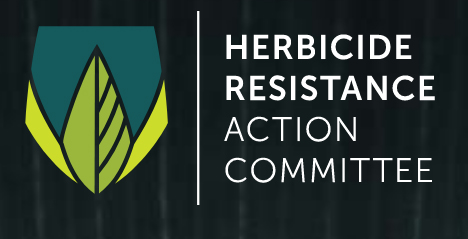INTERNATIONAL HERBICIDE-RESISTANT WEED DATABASE
|
|
Bearded Sprangletop (Leptochloa fusca spp. fasicularis) is a monocot weed in the Poaceae family. In California this weed first evolved resistance to Group 13 (Legacy F4) herbicides in 2020 and infests Rice. Group 13 (Legacy F4) herbicides are known as Inhibition of Deoxy-D-Xylulose Phosphate Synthase (Inhibition of Deoxy-D-Xyulose Phosphate Synthase
). Research has shown that these particular biotypes are resistant to clomazone and they may be cross-resistant to other Group 13 (Legacy F4) herbicides. The 'Group' letters/numbers that you see throughout this web site refer to the classification of herbicides by their site of action. To see a full list of herbicides and HRAC herbicide classifications click here.
|
|
|
|
|
| Common Name | Bearded Sprangletop | | Species | Leptochloa fusca spp. fasicularis | | Group | Inhibition of Deoxy-D-Xylulose Phosphate Synthase HRAC Group 13 (Legacy F4)
| | Herbicides | clomazone | | Location | United States, California | | Year | 2020 | | Situation(s) | Rice | | Contributors - (Alphabetically) | Kassim Al-Khatib, and Amar Godar | |
|
|
|
| | Kassim Al-Khatib | Driver KE, Al-Khatib K, Godar A (2020) Survey of bearded sprangletop
(Leptochloa fusca spp. fasicularis) response to clomazone in California rice. Weed Technol. 34:661–665. doi: 10.1017/wet.2020.25
Abstract Bearded sprangletop is a problematic weed in California rice production and few herbicides provide effective control. As control of bearded sprangletop has declined, grower suspicion of resistance to clomazone has increased, because of the continuous rice cropping system and herbicide dependence in the region. The objectives of this research were to confirm clomazone resistance in bearded sprangletop populations and determine the level of resistance. Seed from 21 suspected clomazone-resistant populations was collected from the California rice growing region. A greenhouse experiment was conducted to determine population sensitivity to clomazone. Clomazone was applied into the water to emerging seedlings. Plant ht and control of bearded sprangletop were recorded weekly for 3 wk, plants were then harvested, and dry weight was measured. Of the populations tested, 17 were susceptible and four (5%) were resistant to clomazone. A dose-response assay was conducted using eight doses ranging from an eighth of the full rate to 12 times the full rate. The three most resistant populations had resistant-to susceptible ratios of 1.25×, 2×, and 5× the labeled rate of clomazone. The use of clomazone in California rice production is beneficial; however, it should be used at the appropriate timing and as part of an herbicide program to prevent further development of clomazone resistance. Edit this Note | Add New Note |
|
|
|
|
| | Greenhouse, and Laboratory trials comparing a known susceptible Bearded Sprangletop biotype with this Bearded Sprangletop biotype have been used to confirm resistance. For further information on the tests conducted please contact the local weed scientists that provided this information. |
| |
| | Genetic studies on HRAC Group 13 resistant Bearded Sprangletop have not been reported to the site. There may be a note below or an article discussing the genetics of this biotype in the Fact Sheets and Other Literature |
| |
| | The mechanism of resistance for this biotype is either unknown or has not been entered in the database. If you know anything about the mechanism of resistance for this biotype then please update the database. |
| |
| | There is no record of differences in fitness or competitiveness of these resistant biotypes when compared to that of normal susceptible biotypes. If you have any information pertaining to the fitness of Group 13 (Legacy F4) resistant Bearded Sprangletop from California please update the database. |
|
|
|
|
| Director and Ce Specialist, Statewide IPM Program
Statewide IPM Program
Integrated Pest Management
2801 Second Street #152
Davis, 95618-7774, California
United States
Email Kassim Al-Khatib
Web : Web Site Link |
| |
| Ph.d. Student
Kansas State University
Agronomy
3719 Throckmotron Plant Sciences Center
Manhattan, 66506, Kansas
United States
Email Amar Godar
Web : Web Site Link |
|
|
|
|
| Drag a column header and drop it here to group by that column |
|
|
1
| United States (California) | United States | California | 2020 |
Rice
|
clomazone
| 45 |
Inhibition of Deoxy-D-Xylulose Phosphate Synthase ( HRAC Group 13 (Legacy F4)
| 355 | Leptochloa fusca spp. fasicularis | Bearded Sprangletop | 21233 |
|
 |
PERMISSION MUST BE OBTAINED FIRST if you intend to base a significant portion of a scientific paper on data derived from this site. Citation:
Heap, I. The International Herbicide-Resistant Weed Database. Online.
. Available
www.weedscience.org
Copyright © 1993-
WeedScience.org All rights reserved. Fair use of this material is encouraged. Proper citation is requested.
|
|